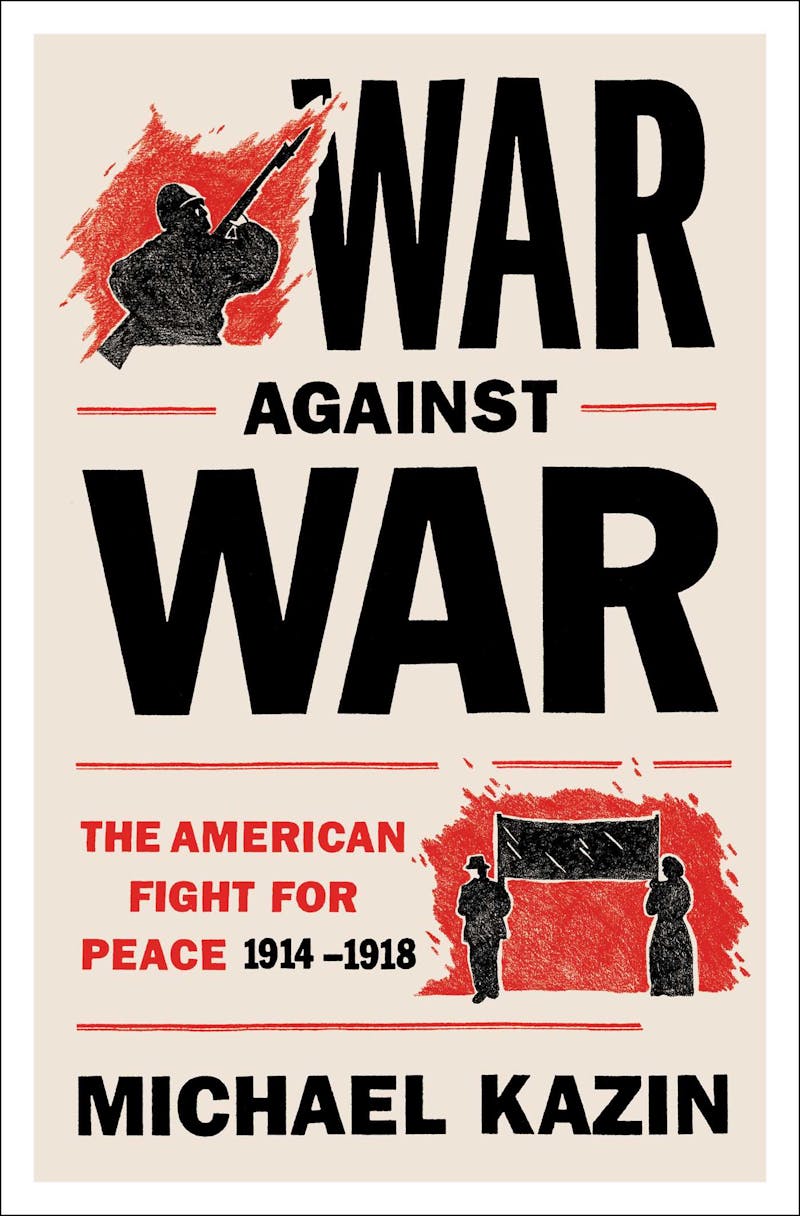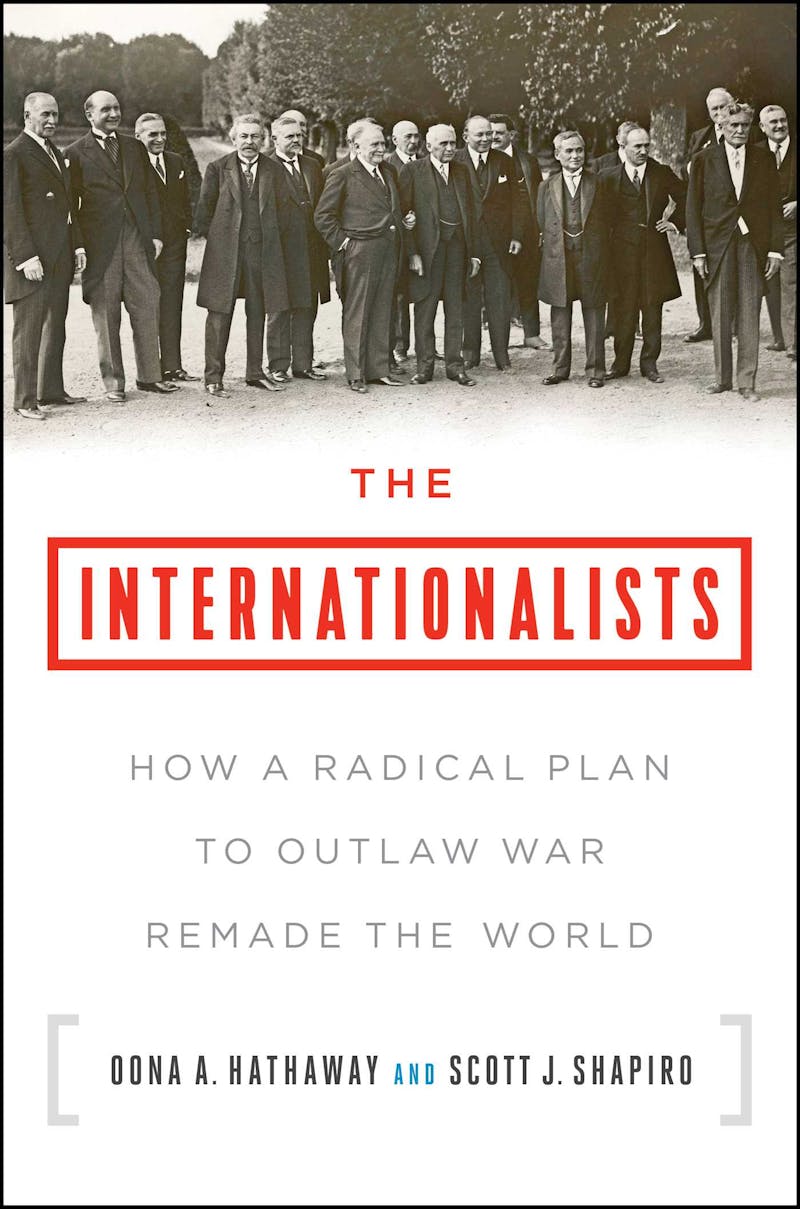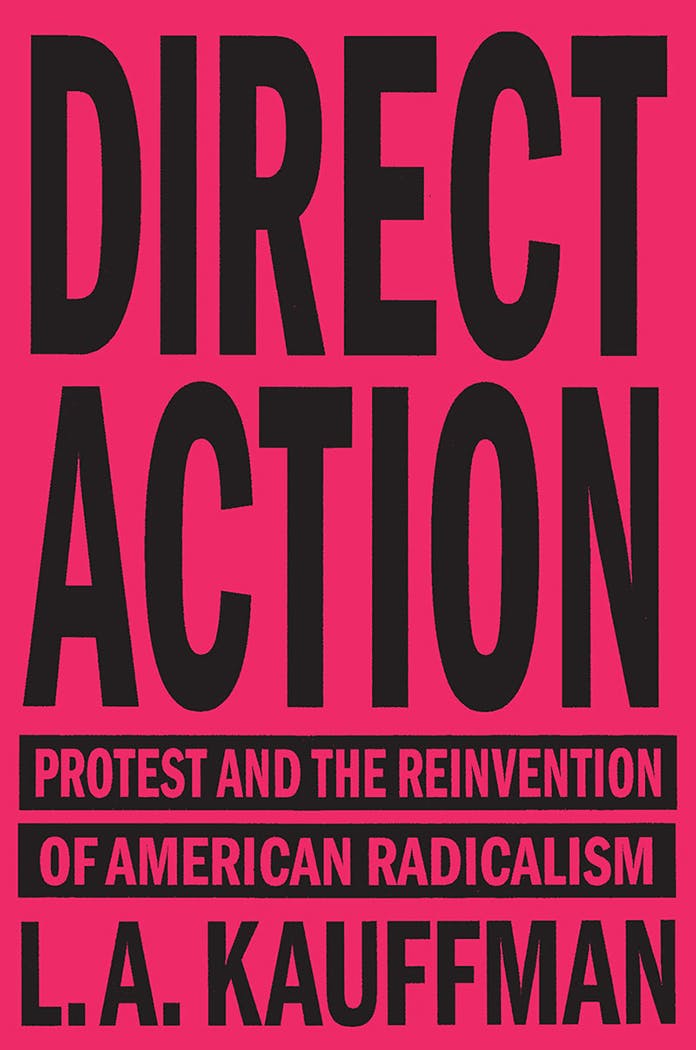At the turn of the twentieth century, leading figures in the Progressive movement nurtured an idealistic dream. With the right kind of social reform, they believed, humanity could end all war. The philosopher William James called for a “moral equivalent of war.” The Carnegie Endowment for International Peace funded legal efforts to abolish war. And in her 1907 book Newer Ideals of Peace, Jane Addams predicted that more rights for workers, women, and immigrants would soon create so much global cooperation that no one would fight again.

The outbreak of World War I in 1914, followed by America’s entry into the war in 1917, seemingly shattered that dream. Woodrow Wilson had won reelection in 1916 on the slogan “He kept us out of war,” but when Germany declared submarine warfare against neutral shipping—and any American civilians on those ships—in early 1917, Wilson rapidly changed his mind. (The Zimmerman Telegram, with its offer of German assistance for a Mexican invasion of the United States, didn’t help.) On April 2, 1917, Wilson asked Congress to declare war. The peace movement, which had been a key component of his electoral alliance, felt profoundly betrayed. Wilson signed the Espionage and Sedition acts, which enabled the government to monitor its own citizens and made it a crime to “utter, print, write or publish” anything “disloyal” about the government. Many antiwar activists, who had recently enjoyed broad public support, were thrown in jail.
The peace movement’s fears of a militarized surveillance state had come true. That militarization has continued through the past century. The FBI and CIA have routinely surveilled American citizens without due process. The draft has been used to wage unpopular wars in Korea and Vietnam. And a vast military-industrial complex continues to shape our foreign policy and domestic spending priorities. Michael Kazin argues in his recent book War Against War that the months just before the U.S. joined WWI “may have been the most consequential period in the history of America’s relationship with the outside world.” He may well be right: The decision to enter the war created the national security state we still live in today.
At the same time, war has provoked powerful new ideas about justice and peace that have echoed through generations, as three new books show. War Against War argues that the peace movement energized the American left and helped shape its identity for decades to come. Oona Hathaway and Scott Shapiro’s The Internationalists proposes that the Kellogg-Briand Pact of 1928 reduced the incidence of war throughout the second half of the twentieth century. Picking up the story in the late twentieth century, L.A. Kauffman’s Direct Action traces how antiwar activists from Vietnam to Iraq helped lead the American left in an increasingly inclusive fight for democracy at home and abroad.
In War Against War, Kazin, a Georgetown history professor and editor of Dissent, focuses on the leaders of groups in the “motley” antiwar coalition. Jane Addams, along with the socialist journalist Crystal Eastman, led an international bloc of feminists and pacifists. Morris Hillquit, a suave labor lawyer from New York City, saw the war as a power grab by the capitalist and imperialist nations of Europe. Claude Kitchin, the House Majority Leader, rallied the Democratic Party’s opposition to the war, sometimes against the wishes of President Wilson. Republican senator Robert La Follette steered a group of Midwestern and Western progressives who thought that big business was trying to push the U.S. into the war mainly to make a profit on arms deals with England. At the same time African American activists like A. Philip Randolph and W.E.B. Du Bois criticized the conflict as a racist tug-of-war over colonial resources and subjects.
Early in the war, this diverse coalition looked like it might succeed. They staged marches, rallies, art exhibits, and theatrical performances to build public opposition to preparedness measures like the draft, which they feared would militarize the country. Feminists held a huge international convention in The Hague to demand a negotiated peace together with votes for women. Henry Ford financed an ill-fated “Peace Ship” filled with amateur diplomats who sailed to Norway in late 1915, hoping, as Ford declared, to “get the boys out of the trenches before Christmas.” Addams and others met repeatedly with Wilson, who seemed amenable to their cause—perhaps willing to use America’s position as a powerful neutral nation to mediate a truce—right up until he asked Congress to declare war.
Kazin criticizes the antiwar movement’s strategy at times, writing that “peace lovers may have diluted their strength by working on a number of worthy projects that did little to stall the arming of America.” Activists found the time to keep pushing for labor rights, women’s suffrage, and ethnic tolerance; Addams lobbied Wilson to pull American troops out of a different conflict, the occupation of Haiti in 1915. This proliferation of causes kept the movement from coalescing behind the single issue of the war. In October 1915, leaders of the major peace groups met in Manhattan to try to reconcile their “extremely divergent types of temperament and policy,” but they only managed to agree to meet again and to answer a questionnaire about what they were doing and why.
Despite the Progressives’ ultimate failure, the war also invigorated them. Many activists continued to work on a broad range of social justice campaigns in the 1920s and 30s, pursuing the same kinds of international cooperation they had sought during the war. Du Bois, for instance, rededicated himself to anti-colonialism and anti-racism after the war. And a number of peace organizations formed in response to the war went on to shape American law and politics for many more decades. The American Civil Liberties Union, which was founded to protect free speech in wartime, has defended free speech rights and other civil liberties. The Fellowship of Reconciliation, founded around the same time, funded the first freedom rides in the 1940s, and its partner organization the War Resisters League provided strategic support to Martin Luther King, Jr. in the 50s and 60s.
The antiwar movement’s multi-issue focus eventually bore many fruits. And although subsequent antiwar movements have often been short-lived, a continuous thread has connected them, as activists and organizations have passed on the ideas of an earlier left to its later iterations over the decades. Kazin’s own book is powerfully representative, written by a former Vietnam War protestor recovering the history of WWI protest in hopes of speaking to the left today.

In The Internationalists, Hathaway and Shapiro look at a different approach to preventing war. They argue that the Kellogg-Briand Pact, formed in response to WWI, fundamentally altered international relations. The Pact began when French Foreign Minister Aristide Briand proposed that France and America renounce war against each other. Frank Kellogg, the U.S. Secretary of State, thought Briand was simply trying to trick America into defending France if Germany ever attacked again. So Kellogg made a counteroffer: The U.S. would give up war, as long as every other major power did too. Kellogg was surprised when they agreed. On August 27, 1928, world leaders gathered in Paris to sign a Peace Pact that outlawed war “as an instrument of national policy.”
The Pact is often seen as a mighty failure—there was, after all, a second World War. But Hathaway and Shapiro contend that what it changed was the concept of war. Until the early twentieth century, war was not only allowed, it was relied on as the primary mechanism of global justice. There were no courts to hear disputes between sovereign states, so states were legally justified in using war to defend their rights. The state that won was assumed to have waged a just war. Might made right.
One American particularly horrified by this understanding of war was Salmon Levinson, a Chicago business lawyer who decided that “the real disease of the world is the legality and availability of war.” In 1918 he wrote in The New Republic that while a ban on war would not eliminate it, any more than criminal law stops murder, if war were “branded as a crime,” then “the force of the world would be organized to deal with the criminal.”
In 1921, Jane Addams and the Women’s International League for Peace and Freedom helped circulate 350,000 copies of a pamphlet Levinson drafted called Outlawry of War. Churches, chambers of commerce, journalists, and politicians were brought onboard. In the following years, Levinson was joined by the historian James Shotwell, the diplomat Sumner Welles, the legal scholar Hans Kelsen, the Supreme Court justice Robert Jackson, and the international lawyer Hersch Lauterpacht to build a new, increasingly complex international system around the outlawry of war. The development of the Kellogg-Briand Pact in 1928 was part of this program (Levinson advised Kellogg, Shotwell advised Briand), as was the formulation of the UN Charter and the Nuremberg Trials in 1945.
The new post-Pact international system, Hathaway and Shapiro argue, has been remarkably successful. The amount of territory conquered in war has plummeted by 94 percent since the Pact was signed. Moreover, before 1928, the average state experienced one conquest per human lifespan, but since the late 1940s, that rate has fallen to one or two conquests per millennium. States figured out how to enforce the ban on war through economic sanctions, how to build a more successful international governing body, and how to prosecute war crimes. Even if the Pact itself did not end war, the theory goes, the central idea embodied in the Pact has changed the world.
It’s better to live in this new international system, Hathaway and Shapiro write, “with its real, sometimes terrible drawbacks, than to go back to a system where war is legal” and global governance falls apart. But, as we shore up the global system today, we should also try to improve it. America, after all, went on invading other nations in the late twentieth century even as it helped build a new world order that outlawed war.
The Pax Americana that emerged after WWII was in fact riddled with American breaches of the peace: invasion, assassination, and funding and arms support for coups d’état, torture, repression, and civil war. The American left—with mixed success—attempted to make that violence visible in order to generate public pressure to wage fewer wars. As Kauffman narrates in Direct Action, opposition to the Vietnam War transformed the nature of American antiwar movements. Over the next 50 years protest politics would no longer center on mass marches, but shift to the active disruption of sit-ins, boycotts, and human blockades.

Kauffman’s story begins on May 3, 1971, when 25,000 young radicals calling themselves the Mayday Tribe descended on Washington, D.C., to try to shut down the government. It was “the largest and most audacious direct action in US history.” Following an elaborate tactical manual, the activists spread out to blockade 21 bridges to prevent federal employees from reaching work. Unfortunately for them, their detailed manual also told the government precisely where they would be. Richard Nixon mobilized the Army, Marines, and National Guard to help the police round up over 7,000 people—still the largest mass arrest in American history. They failed to shut down the city. But the specter of their direct action did shake the White House, ultimately helping speed America’s exit from Vietnam.
The Mayday action also helped change the course of leftist activism in America. It was “a crucial first experiment with a new kind of radicalism,” Kauffman writes, launching a long-term effort to live the revolution instead of demanding that lawmakers change the law. In 1980, for example, at the Women’s Pentagon Action, 1,500 female activists surrounded the Pentagon to claim that the social fabric was being torn apart by rampant militarism, sexism, racism, homophobia, environmental devastation, nuclear proliferation, and cuts to social spending. They set out to reweave “the web of life,” literally weaving a net of yarn around the Pentagon so no one could get in to work. Later that decade, 100,000 activists similarly blockaded CIA headquarters to protest U.S. backing for the dirty wars in Central America.
Direct action flourished in the 1990s, influenced by the in-your-face street theater of the AIDS advocacy group ACT UP, and in many ways culminated in the Battle of Seattle protests against the World Trade Organization in 1999, where a range of leftist groups united in a massive direct action, broadcast around the world. Most of these protests were not as spectacular or widespread as the resistance to Vietnam had been, but they showed a more capacious sense of the interconnected ills affecting society.
Kauffman concludes with Black Lives Matter, an “explicitly intersectional” movement, shaped by the feminist theories and practices developed by earlier activists like the Women’s Pentagon Action. As the Platform statement of the Movement for Black Lives later put it:
While this platform is focused on domestic policies, we know that patriarchy, exploitative capitalism, militarism, and white supremacy know no borders. We stand in solidarity with our international family against the ravages of global capitalism and anti-Black racism, human-made climate change, war, and exploitation.
Whereas the opponents of WWI may arguably have been distracted by focusing on too many disparate issues, today’s activists are stronger for tackling many interconnected issues at once.
Fighting for a more peaceful and equal world increasingly means forming more inclusive and connected movements. Bernie Sanders has recently outlined a new progressive foreign policy built around global solidarity against income inequality and climate change. Those issues are also tied to questions of race and war. Wealth inequality largely follows what Du Bois called the global “color-line,” and the effects of climate change will fall disproportionately on the global poor and people of color. Climate change itself will produce further military conflict as a result of drought, famine, flooding, and forced migration.
It isn’t just that global interconnection demands international cooperation to address our biggest problems. Our biggest problems are themselves deeply interconnected. Combating them will require both grass-roots organizing that links up local and global issues—the kind of organizing described in War Against War and Direct Action—and innovative reforms to strengthen international legal and political systems and make them more democratically accountable.
This will be a long and difficult task. But if the history of efforts to end war teaches us anything, it is that radical ideas endure, inspiring activists and institutions even in periods when the left is in retreat. The antiwar movement offers a story of resilience and collaboration in the battle to expand and democratize public life—to fill up the “void,” as Randolph Bourne put it in 1917, “where a democratic philosophy should be.”
